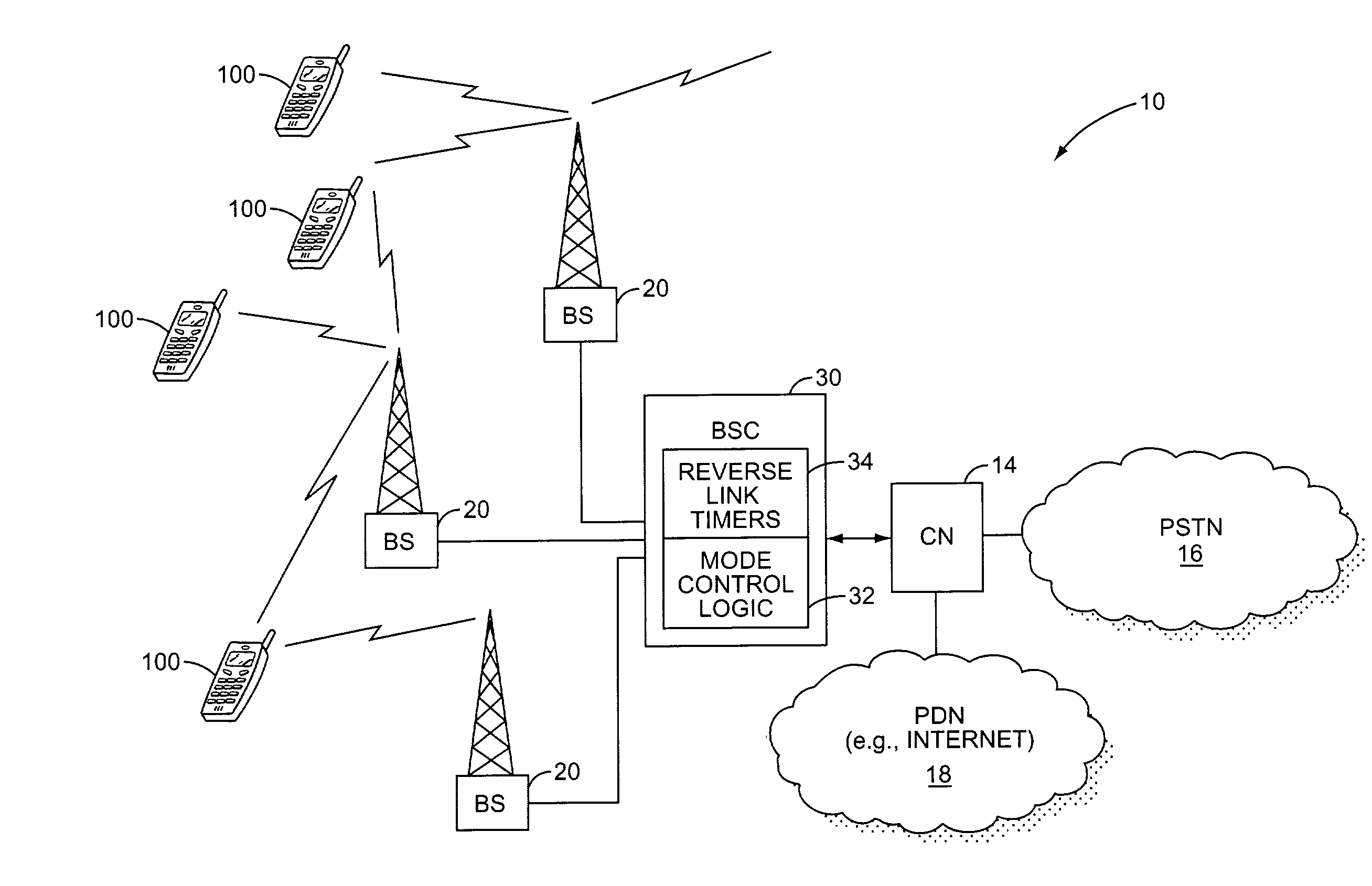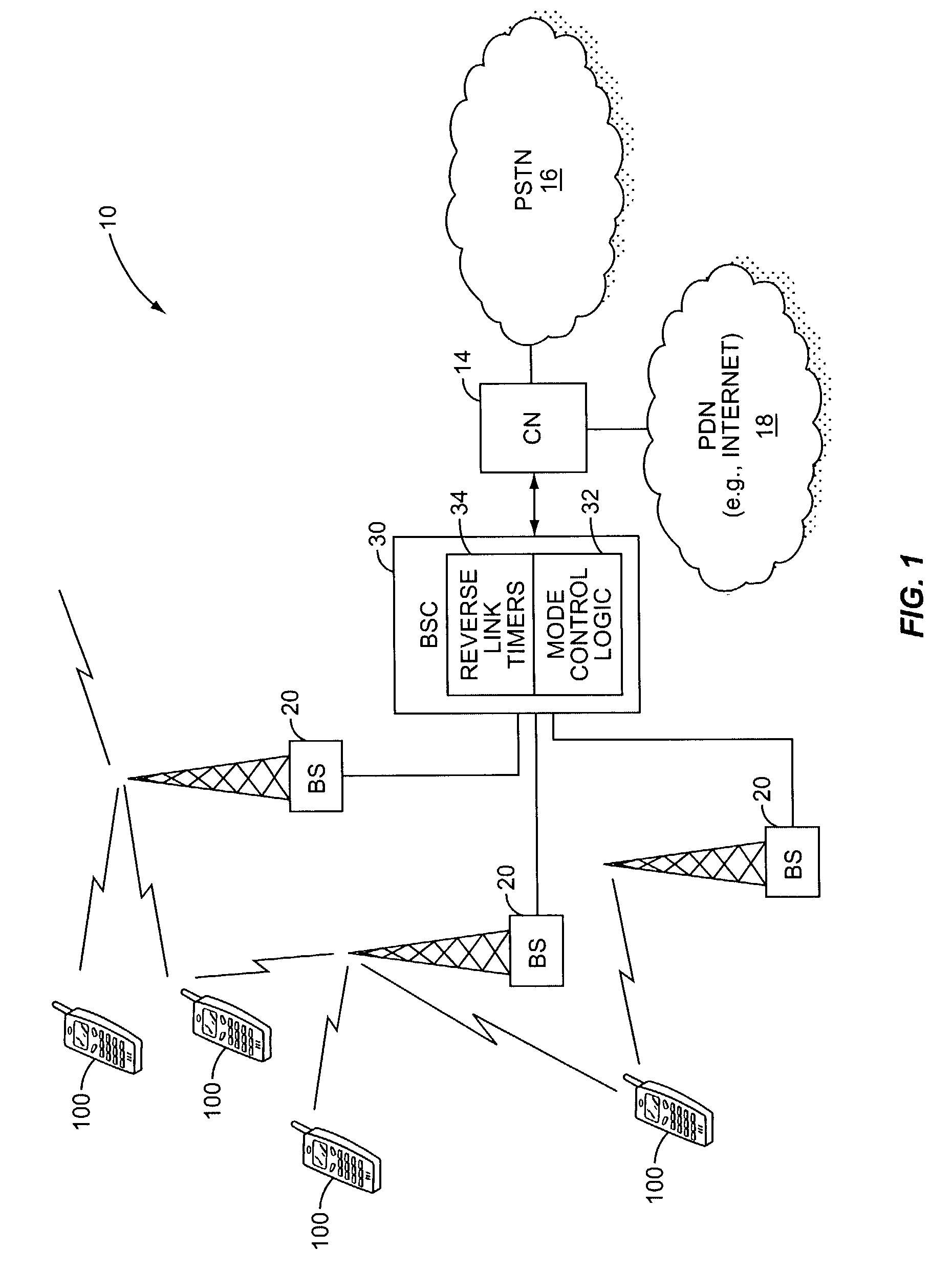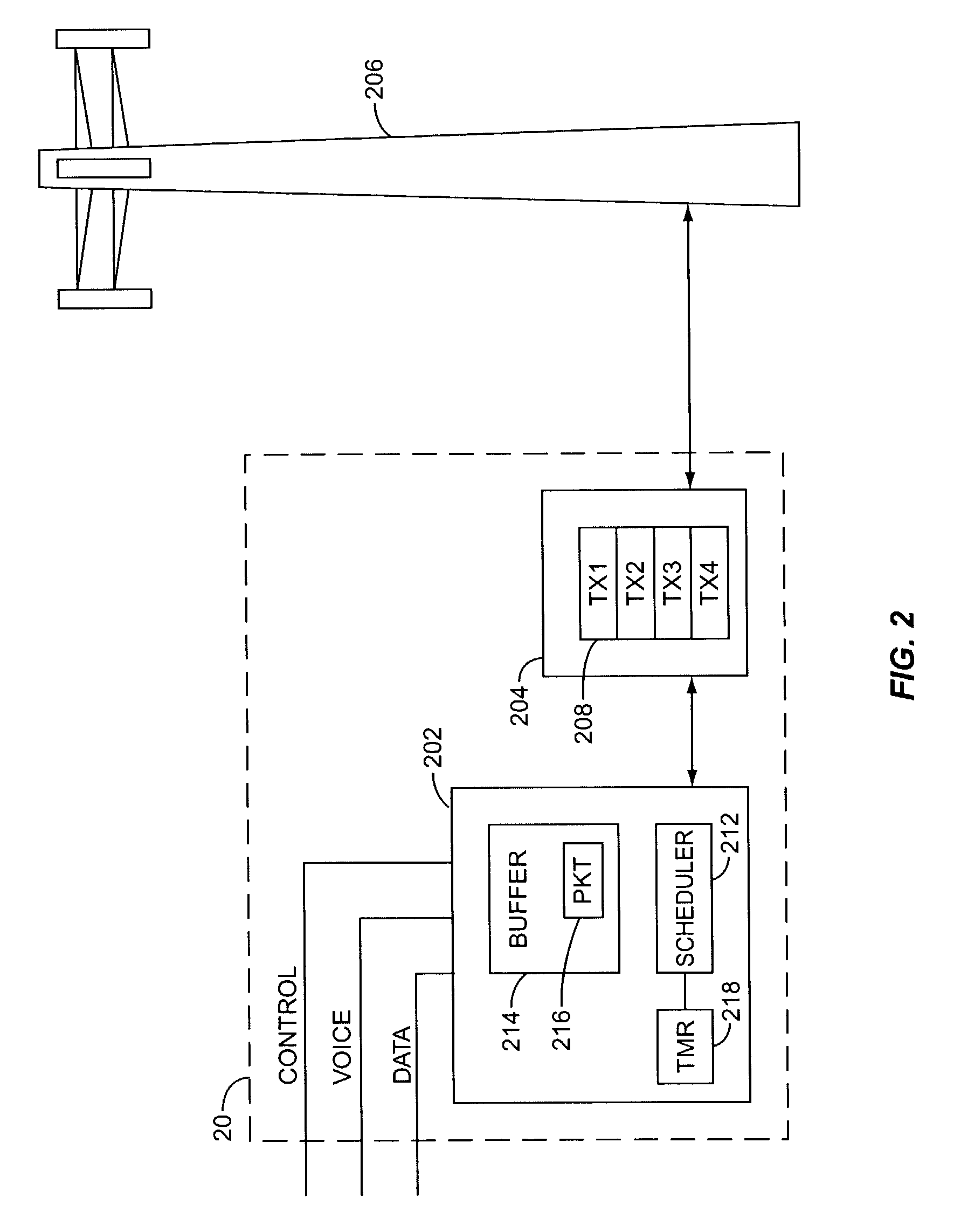Mobile terminal mode control in high data rate CDMA system
a mobile terminal and data rate technology, applied in the field of wireless communication, can solve the problems of increased battery life, interference-limited cdma system, lower power consumption at the mobile terminal, etc., and achieve the effect of increasing system capacity and reducing interferen
- Summary
- Abstract
- Description
- Claims
- Application Information
AI Technical Summary
Benefits of technology
Problems solved by technology
Method used
Image
Examples
Embodiment Construction
[0014]Referring now to the drawings, the mode control method of the present invention is shown in the context of an IS-2000 mobile communication network, which is indicated generally by the numeral 10. IS-2000 is a communications protocol for code division multiple access (CDMA) radio networks published by the Telecommunications Industry Association (TIA) and the Electronics Industry Association (EIA). FIG. 1 illustrates the logical architecture of a mobile communication network 10 and is not intended to imply a particular physical implementation. The following description is intended to describe how to implement the present invention in an exemplary mobile communication system. Those skilled in the art will recognize that the present invention can be adapted for use in mobile communication systems employing different standards, such as IS-95 in Wideband CDMA (W-cdma) systems.
[0015]The mobile communication network 10 includes a plurality of base transceiver stations 20 (referred to ...
PUM
 Login to View More
Login to View More Abstract
Description
Claims
Application Information
 Login to View More
Login to View More - R&D
- Intellectual Property
- Life Sciences
- Materials
- Tech Scout
- Unparalleled Data Quality
- Higher Quality Content
- 60% Fewer Hallucinations
Browse by: Latest US Patents, China's latest patents, Technical Efficacy Thesaurus, Application Domain, Technology Topic, Popular Technical Reports.
© 2025 PatSnap. All rights reserved.Legal|Privacy policy|Modern Slavery Act Transparency Statement|Sitemap|About US| Contact US: help@patsnap.com



